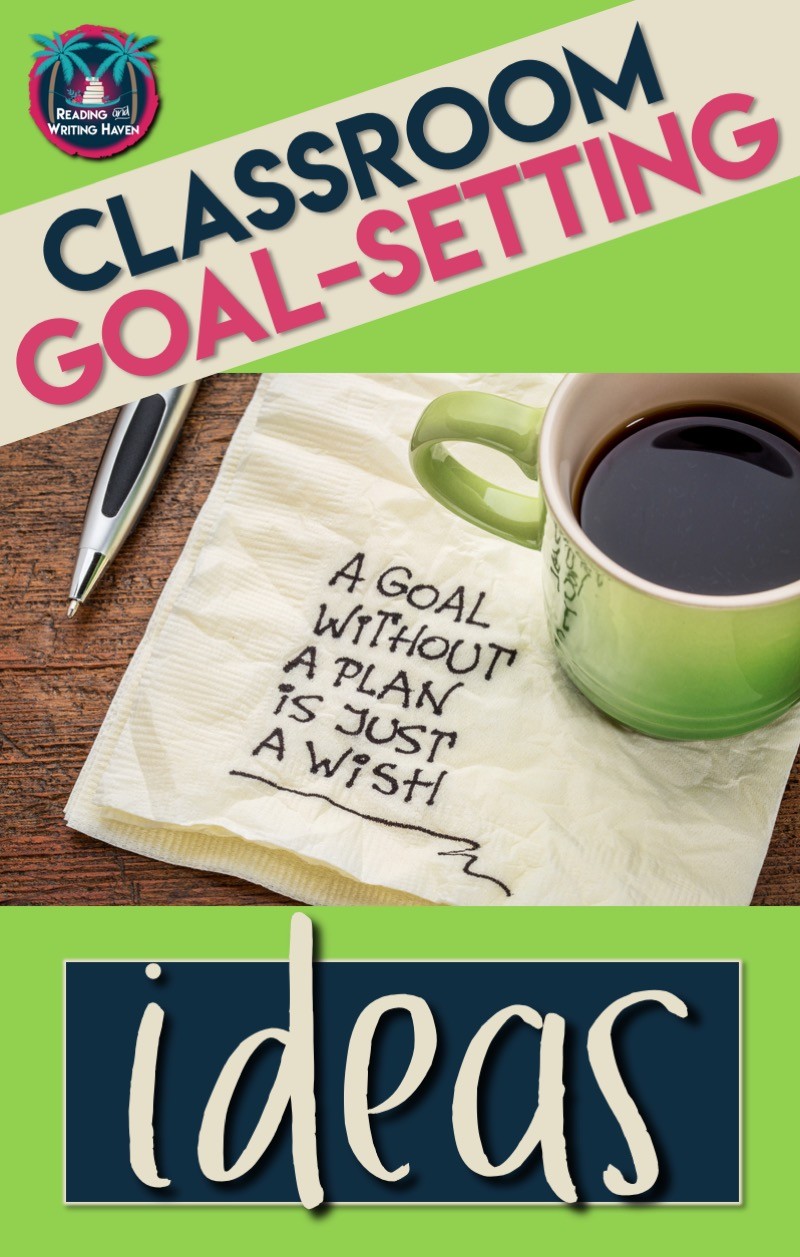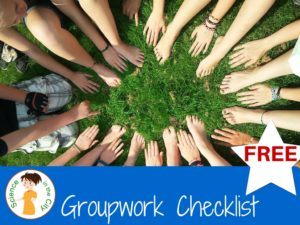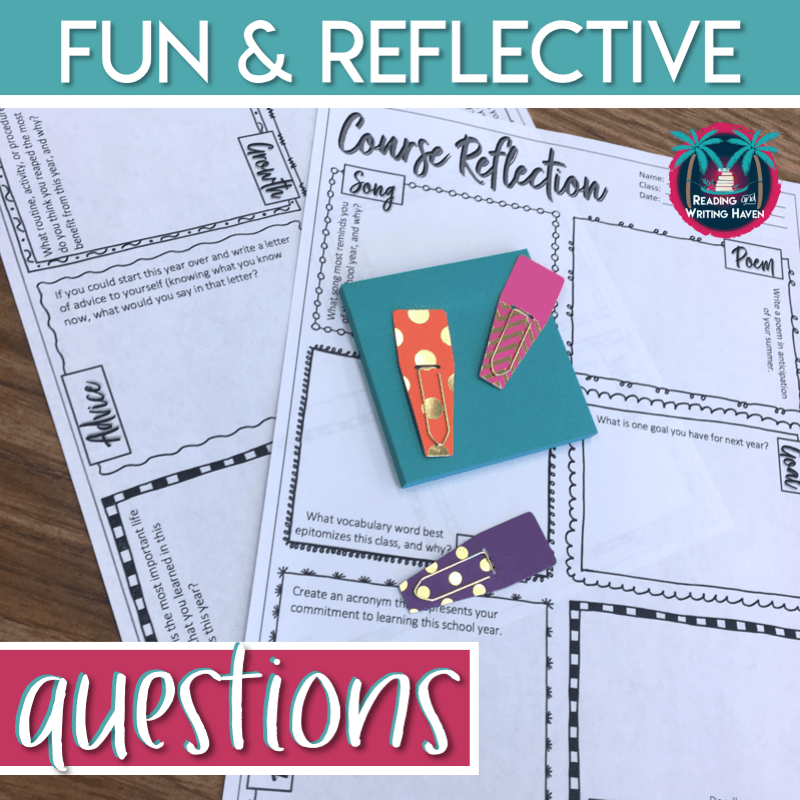Meaningful Reflection in the Classroom: 10 Goal Setting Ideas
A New Year means it’s time to pause and reflect. It’s time to make resolutions, to identify areas for growth, and to set goals. Best practices in education require that both teachers and students do so. How will reflecting upon first semester look in your classroom? For each teacher, the answer is different. Keep reading for specific ideas to make reflection meaningful for both you and your students.
One goal-setting tactic I have found to be almost foolproof, both for myself and my students, is using an accountability partner. Once I started including someone else in my goals — someone who I could count on to check up on me and encourage me daily — I began to look forward to accomplishing the visions I had established for myself.
For example, with independent reading, did I actually read the ten books I set out to read? Or, did I only read one? Sharing reading goals with friends and colleagues has resulted in regular conversations about books we are reading individually or collaboratively, which has helped me to achieve my goal. The same rings true for students!
One of the most beneficial ways we educators can improve our teaching is by collaborating with other teachers, putting our heads together to devise better, more innovative, creative, cutting-edge methodologies for our classrooms.
Reflection doesn’t have to be boring. And it doesn’t have to be done in isolation. Assuredly, some of our proudest growths as teachers have been a result of group reflection and brainstorming sessions.
In the spirit of collaboration and self-improvement, I’ve asked a handful of teacher authors to share their thoughts on how to ring in the new year right…for both educators and students! Read on to find inspiration.
 Perspective
Perspective
Kim, OCBeach Teacher, says it’s all about perspective.
At the beginning of each school year, I start with excitement and energy. I feel creative and balanced. Unfortunately, as the weeks and months pass, I start fretting over the details. The constant competing demands put on me by administrators, parents, and students erode my earlier calm, making me and push myself and the students in an effort to meet all of their mandates. Sadly, teaching and learning can feel tedious and my classroom becomes less joyous. This is not what I want for my classroom, so winter break is a good time to reflect and regain perspective.
I ask myself: Will this matter in a year? five years? or many years into the future? Often, the answer is “no.” As long as my students enjoy reading, develop their vocabulary, become competent writers, demonstrate critical thinking, and display good citizenship, I am doing my job. Maybe we won’t get to that story I love, or write that other paper, and that’s okay. Ultimately, I want my student to leave with good memories of my class and their learning here. The New Year is a perfect time to recover this outlook.
 Values
Values
Angie Torre from Best PowerPoints for Spanish suggests starting by revisiting our values can help.
Making a list of goals and a to-do list based on those goals makes me a slave to my list. So, I begin with the foundation upon which my goals are based – my values – and revisit those yearly. I write out my goals, then my to-do list based on those goals, and then I rate them according to importance: A for most important according to my values, B for important but the world will not end if it doesn’t get done, C -it’s OK if it doesn’t get done today. That way, at the end of the day, I’m assured that the most important tasks have been accomplished and I am not regretful that I didn’t spend time with a loved one or send a card to a hurting person.
 Documenting
Documenting
Lauralee from Language Arts Classroom stresses the importance of organized documentation.
As the new year starts, I must hold myself accountable for modifying my lesson plans. My lesson plans are digital, and I modify as I reflect and change each year. The problem? I forget to note what changes I made for the following year. When I look back nine months later, I struggle to recall the exact changes. My goal for next year is to continually shape my lesson plans because the following year WILL be easier if I do so.
Two-Part Goal Setting
Education with DocRunning comments, “My experience has been that successful goal setting requires two components: self-designed goals and strategies for achievement.”
- Self-designed goals: We tell students all the time that they should go to college, do well in school, engage in lots of activities, and, and, and… We have their best interests at heart, but at some point students need to be empowered. I ask students to set goals in three areas: academic, personal, and life. All the goals are truly their own. If they want to remember to bring in their homework every day that’s fine. If they are aiming for Harvard, that’s fine, too. They may even have goals not related at all to my class like getting an A in English. Regardless, students set their individual goals. By setting their own goals, they take ownership and more importantly, VALUE them.
- Strategies for achievement: It’s easy to set goals, but much harder to get to them. Every year I have students tell me they want an A, but they really don’t know how to get there. So, step 2 is developing ways to achieve that goal – breaking it down into achievable steps. This is the fun part. Students feel so much better when they have tangible ideas about how to get to that goal. I have students paste their goals and strategies in their notebook so that they can easily reference them.
 Reminders
Reminders
Carrie from My Book Boost suggests using purposeful reminders:
Here is one way to ensure you don’t forget about the goals and/or resolutions that you’ve made for the new year. Write a key phrase like “drinking 3 glasses of water?” in your calendar each month on the same day. This way you won’t forget about your resolution after a few months. Just tailor the question or reminder to whatever your goal is. Write it once a week, once a month, or a few times throughout the year, depending on how many reminders you think you need.
Here are a few examples of phrases or questions you might write (all things I personally want to keep in mind):
- Planning a meal before grocery shopping?
- Drinking green tea three times/week?
- Speed cleaning the house once a day?
Best of luck with forming the habits you want to form! These thoughts were originally published on Carrie’s blog. You can read more here.
 Keep it Fresh
Keep it Fresh
Science in the City says it’s important to help students learn to revisit goals and make changes.
The new year is a great time to make resolutions and changes in your own practice, but it is also a key time for students. They are thinking about resolutions and the new year. To capitalize on this, to take the time in class to reflect, set goals with them, and use it as a turning point in class. If you do this, be sure to re-visit these goals with them on a semi-regular basis to add value. Finally, you can make changes in your teaching or in your classroom at any time. Don’t feel locked into something for the entire year, just because you started off that way.
I’ve used this resource with students when I am encouraging them to be self-reflective with group work. It’s useful for students to reflect on their own role and responsibilities at the end of class or during a project, not just at the end of the semester or school year.
 Video Journals
Video Journals
Lit with Lyns keeps it fresh with digital journals.
When we return to school after the holiday break, I like to have my students reflect on the goals that they have accomplished, what they need to do to improve, etc. in the New Year. We look back at their digital goal setting chart that is posted on each of their Google Drives, and they individually comment on what worked well, what didn’t work, and what they can do to improve as we start the 3rd nine weeks.
I also use video journals leading up to and after the New Year that addresses SMART Goals — here students are asked to reflect on the past year, as well as the year to come. Using the information they include in the journal responses, students will then complete a New Year’s Infographic. I post these around the room so that students can be reminded of their goals and where they would like to see themselves by the end of the year.
 Long and Short-Term Goals
Long and Short-Term Goals
Ellen Weber stresses the importance of both long and short-term goals.
When I’m deliberate about setting long-term goals at the beginning of any term, my students and I seem motivated to design innovative approaches and tackle problems with possibilities in mind. For instance, I pose two-footed questions and encourage student-generated questions to help students lead a). peace over conflict, kindness over attack lingo, inclusion over a need to win, risks over tired routines. With each long-term goal we set, evidence is required to show how students met that goal in a specific way that relates to their interests and capabilities.
Short-term goal setting is central to every class, in that an advanced organizer is displayed before every session to identify targets we’ll reach together during class. Students often add their insights to long-term and short-term goals so that we run along the same paths for shared benefits.
 Awareness
Awareness
Kid World Citizen looks at the new year as an opportunity to build students’ global awareness.
This year I would like to continue to grow and develop as a teacher, and strive to reach students where they are. I hope to include empathy building exercises, and global and cultural awareness so that kids are exposed to differing perspectives. Together we can help cultivate kindness in this rising generation!
 3-Pronged Goal Setting Approach
3-Pronged Goal Setting Approach
Kovescence of the Mind recommends a three-part goal setting approach.
Use your break to recharge before the new year…take a break; this helps me see more clearly where I have been and where I am going. I start the new year (and the new semester) off with a goal-setting activity. We share what we did well as s class and where we need to change. Then students create a visual of their name and include on the page three goals for the new year: academic, relationship, and self-improvement. I post these for the semester and resist every month as a journal prompt.

RELATED RESOURCE:
If you’d like a way to help students reflect on their learning to this point, this end-of-the-semester course reflection and evaluation can help.



